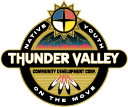CONSENSUS AND THE PEOPLE COME FIRST
For many, many years prior to 1492, Indigenous peoples practiced consensus through what we Lakota call “Oyate Omniciyé” (oy-ah-tay oh-meh-nee-chee-yay) which roughly translates to “Circle Meetings of The People”. Oyate Omniciyé is the “executive, legislative and judicial” governing body of the people and represents the true definition of the word democracy – “the people rule”. Consensual decision-making is carried out through these open forums, where everyone’s input is respected and thoroughly and openly discussed. Respect for the winyan and wakanyeja and the belief that the Earth is Maka Ina (not a “resource” to be used up) is crucial to Oyate Omniciyé.
Neglect of these beliefs creates distress and imbalance within our communities. When we allow a male-dominating, pyramid hierarchy to control and coordinate the pollution and abuse of Maka Ina this goes against the very nature of Oyate Omniciyé. As a result, concepts of “majority rule, might makes right and self gain” start to cloud our identity and traditional way of coming together to solve problems and discuss the issues. The Nakota (Nakota/DaNakota/Dakota/Lakota misnomer “Sioux”) Nation gave this dominant culture and associated style of government the name ”wasin icuna” or “wasicu” (takes-the-best-part or the greedy ones). Ancient “circle” principals teach respect, consensus, balance, and benefit the whole nation, while honoring the ones who came before and preparing the way for future generations to come.
TREATY RIGHTS
Consensual decisions of Oyate Omniciyé should be simple and well defined, as in the following excerpt;
Whereas, the Nakota Nation, Cheyenne, Arapaho, Crow, Hidatsa, Mandan and Arikara Indigenous Red Nations are signatory to the 1851 Treaty of Fort Laramie, which was unanimously agreed upon by each of the seven Indigenous nations surrounding Very Sacred Big Horn Black Hills Mountain and Black Jagged-Rocky-Mountain (misnomer “Black Hills”) Regions, through their respective Oyate Omniciyé mandate and principal Itacan representation thereof, with the government of the United States of America on September 17, 1851, ratified by U.S. congress in 1853.
This paragraph states the basic natural and human position of the nation, including reference to the last legal document of the nation, the 1851 Treaty of Fort Laramie. The Treaty, called the Great Horse Creek Treaty to the Cheyenne and The Treaty of Long Meadows to the Lakota, was developed through Oyate Omniciye for over four years called the “Big Issue”. The Big Issue was resolved on September 17, 1851, through the signing of the 1851 Treaty of Long Meadows between the U.S. government and seven Indigenous Red Nation representatives numbering over 50 thousand (see historic Nebraska events).
The international 1851 Treaty was created and agreed upon unanimously by the Arapaho, Crow, Cheyenne, Hidatsa, Mandan, Arikara, N/DN/D/Lakota Nations with legal and proper U.S./Native American proceedings. The 1851 Treaty maintained total and perpetual hunting, fishing, gathering and roaming rights for the seven signatory nations – fully recognized by the three branches of the U.S. government.
Because the 1851 Treaty is such a strong and supreme document – the last legal document between these nations – it remains the ultimate, internationally recognizable legal basis for all future resolutions coming forth from Oyate Omniciyé.
Oyate Omniciyé resolutions at the local community level must be signed by everyone in attendance at the time they are presented. Today, computer records can be kept and rapid communication and surveys utilized via internet. Through the use of technology, this way of life, this way of coming to broad agreement has a chance to blossom again.
In accordance with Article VI of the U.S. Constitution, “all Treaties made, or which shall be made, under the Authority of the United States, shall be the supreme Law of the Land; and the Judges in every state shall be bound thereby”.
In the case of the 1851 treaty, because it was agreed upon unanimously with the consent of each of the seven signatory nations through their governing manner of Oyate Omniciyé, the 1851 Treaty could only be overturned through unanimous resolution – a feat which would never occur. This fact makes the 1851 Treaty of Fort Laramie forever legal.
The 1851 Treaty did not ‘lose value with age’ (152 years young) and must be respected and honored.
CONDUCT
The subject and purpose of the Oyate Omniciyé should remain the sole focus throughout. The entire group must then select a facilitator to make sure things stay on subject. When meetings occur, they are conducted in a circle. This will greatly assist in facilitation. Although there will be some effect from having grown up in square houses, square classrooms and square churches, soon enough the Circle of Unity will return to The People.
The last portion of the meeting should be reserved for any new concerns, which can lead to the subject for the next Oyate Omniciyé.
Ideally, each instance of community Oyate Omniciyé findings, choices and resolutions will be kept on file at a central location, and can represent the legal voice of those Indigenous nations which can assist with recognition by the community of the world’s nations. A nation is not to be measured by size, power or wealth, but by its language, culture and desire to be a nation.
EMPOWERING = SOVEREIGNTY AND NATIONHOOD
Indigenous peoples cannot ask or beg to be nations, or have rights ‘afforded to them’. We must empower themselves while exercising responsibilities as Citizens of our own Nation. The space the physical body occupies is sovereign territory. When coming together in Circle Meetings, sovereignty is multiplied. Nationhood comes from the heart and the desire to make a better future becomes a passion.
REESTABLISHING INDIGENOUS NATIONS
Indigenous nations recognized throughout the world honor Maka Ina as Earth and establish female inclusiveness that is at the heart of Oyate Omniciyé. Healing our nation and coming together once again will spur the disappearance of apathy, poverty, despair and substance use – all symptoms of oppression and the side-effects of attempted assimilation.
It is the duty of each adult to look ahead to the safety and well-being of future generations. Today, the Lakota must continue to strive to be the people who will look ahead again and plan for the distant future – just as our ancestors did for generations and generations before.
Through Oyate Omniciyé, Indigenous thought and inherent wisdom will once again show the people of the world that the Earth is our sacred Maka Ina. This is natural law – it is the great law of the people.
“The United States bind themselves to protect the aforesaid Indian Nations against the commission of all depredations by the people of the said United States.”
Excerpt from Article 3, 1851 Treaty of Fort Laramie







The vision seems a bit rhetorical, although lovely, however it seems to miss the real issues on this reservation. Job creation should be addressed, our men getting their self-esteem back, housing, families without fathers, a welfare ideology that is keeping our people from flourishing and our dependence on the treaty to solve our problems. I hope this meeting can bring out some of these issues.
Thanks for your comment Leon. We value your input and will include your thoughts in our planning project. Oyate Omniciye, the planning project, is an opportunity for community members, like yourself, to get their voice heard. If you have any further suggestions or ideas please feel free to contact me by phone or email.
Phone:
Email:
See, if we can get this circle life back we would then be able to create jobs and us men will have our pride back. . . Nothing physical can help Lakota these days, it has never been that way. . . Our spiritual mind is what we will always have. . . In the instance we lose our ways, we lose our children. We need to outreach to each of the Tribes that signed that original treaty and revitalize the issue. To each reservation and housing complex. Our leaders were never educated so the measure of a wasicu education can never place any human being, alone a true Lakota, in any category or position. Leadership was earned and given. We need to look for the people who are still living the silent and humble way of life. . . Oglala Lakota Oyate. Why is it that everything legally made the U.S. should be recognized but not our treaty decisions? The issue is who we are, Lakota. Why do you think our blood quantum is slowly weakening? Did we make the decision on how Oglala you are? NO. The united states of america crated our quantum and its still legal to this day. Im 19/32. WTF? (WASICU WORDS). . Not just our tribe, but most others as well. This is the real issue. . . Jobs will come and go but a pure culture in this world is a gift not earned or converted. Our Oyate Omniciye will bring the real issue forward, if the people are willing to re-flourish they will. And not by the greed of any wasicu mind thought. . .
Thank you Joseph for your great insight. We value and greatly appreciate your input. If you have any more ideas or questions please feel free to contact me by phone or email.
Phone:
Email: